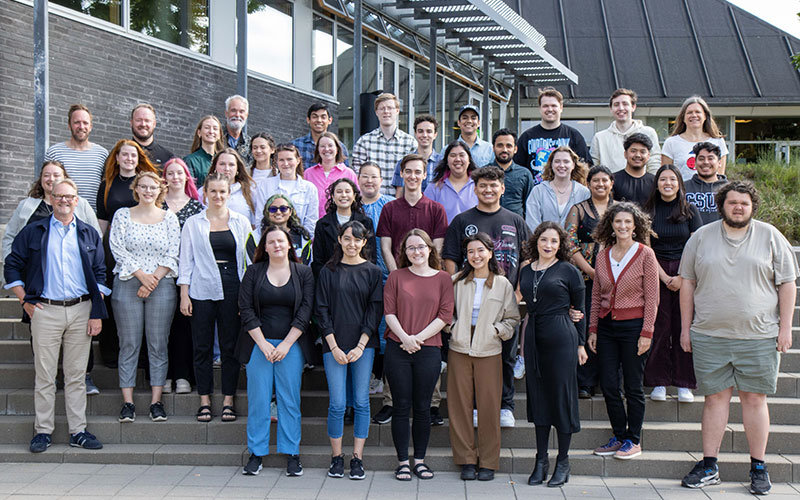
The European Union has passed an initiative that mandates all digital environments be accessible by 2025; this includes both government and private sector platforms. To that end, Denmark is leading the way within the European Union.
The Denmark Minister for Digital Government, Marie Bjerre, welcomed our Cal State Fullerton students to Denmark in a collaborative project with University College of Northern Denmark students and the Aalborg Municipality to create accessible components (User Interface (UI) Atoms and Molecules) for communication platforms within a digital environment. The Danish government wants to make the transition to accessible platforms as smooth as possible for their citizens by providing resources (UI building blocks in the form of Atoms, Molecules, Organisms, and Templates) within these ecosystems to meet this new initiative.
The students from both universities were divided into international teams and asked to do a deep dive into one UI atom or molecule of their choice and incorporate best practices of Accessible Design. To understand the complexity of this assignment, the teams needed to research different types of disabilities and how best to design for them. For example, the “I Am Not a Robot” page (Completely Automated Public Turing test to tell Computers and Humans Apart (CAPTCHA)) is often inaccessible and is designed for people with no disabilities or just one. Unfortunately, these current designs create barriers to information and inclusiveness in daily life.
After an intense two-week experience, the students were asked to present twice, once to the staff for the Minister for Digital Government and another to the Director of Digitalization for the Aalborg Municipality and her staff. Each team presented solutions that examined designs that incorporated numerous disabilities and the research behind their decision-making. Also, the student’s research included user testing.
CSUF students were asked to write a self-reflection paper on their experience as part of this service-learning assignment. As one student put it so aptly, “I truly lived in my own little bubble. I navigated through the world by expecting other people to understand me and that I shouldn’t need to change in order to accommodate or care for others. However, through the Insights Profile, working in cross-cultural settings, and even working with people with opposite personalities to mine, I realized there is a great need for mutual empathy and understanding of different viewpoints. From a social understanding, it helped me see the strength in human differences.”
From a User Values perspective, students discovered that designing for others with needs unlike their own can be challenging and rewarding at the same time. “For example, a mother holding a child will hinder how she can interact with an interface immensely, and if this mother also has dyslexia, there becomes another barrier for her to have a smooth and successful experience. By including audio functions and keyboard functions, we could meet the needs of multiple users who may have multiple disabilities, which is something we couldn’t have predicted if we did not research thoroughly.
We also researched the design guide provided by Aalborg Kommune, as it contains the design elements already set in place. By researching, we could gather the client’s values and design so they could see it implemented in their existing interface when it was time to present. This was especially important after the sketching process. As we began building the system in Figma, we constantly referred to their guide to keep everything consistent and showed our clients that we valued the practices they already set in place.”
The Denmark Accessible UI Design program consisted of 40 students, 18 from CSUF, and six professors (René Bennyson, Birgitte Kjoelner Hansen, Claus André Stig Christensen and Daniel Bloch from UCN, Sarah A. Meyer from Cal Poly Pomona, and John T. Drew from CSUF). These professors help to run the program and give lectures on the topic.
In addition, Lead Designer Jakob Skovgaard Pedersen from Elsevier gave a lecture on UI design systems, and Executive Director Kate Sonka and Director of Education Rolando Mendez from Teach Access gave a talk on Teach Access’s mission and programs in terms of accessibility and inclusiveness. Teach Access is a nonprofit working to bridge the accessibility skills gap.
“We have been running the Denmark program, both inbound and outbound, for 10 years, and by far, this service-learning project was the most meaningful and successful of all of them,” says John T. Drew, Professor of Graphic and Interactive Design at CSUF.
To learn more about this and other CSUF faculty-led study abroad programs, visit extension.fullerton.edu/studyabroad.